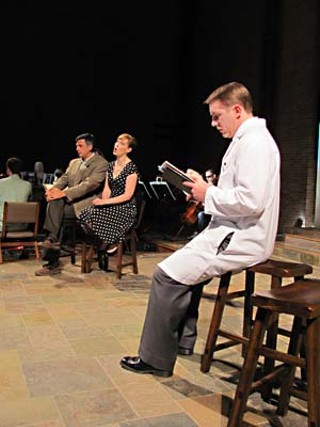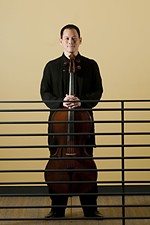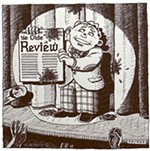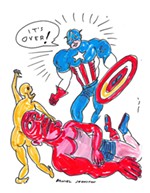The Man Who Mistook His Wife for a Hat
This opera focused on the mind but had just as much to say about the heart
Reviewed by Robert Faires, Fri., July 16, 2010

The Man Who Mistook His Wife for a Hat
St. Martin's Lutheran Church, 606 W. 15th
July 10
The photograph in the physician's hand shows a Ferris wheel. When asked what he sees there, however, the patient replies that he sees a snowflake, a sunflower, a map of Dresden. It isn't his vision that's causing the misperception; it's his mind.
For reasons unknown, the brain of this professional singer and teacher of music has stopped allowing him to piece together the various parts that make up an object – be it rose or foot or face – so that he can recognize its complete form. He can see things well enough, but when it comes to interpreting them, all that registers is an arrangement of vaguely familiar components. Thus, he sees in the Ferris wheel a snowflake, in a skyscraper a rocket, in his wife's head a hat.
Why a man's mind should betray him in such a rare and peculiar fashion is a mystery, and the pursuit of an answer by the attending physician, Dr. S, drives The Man Who Mistook His Wife for a Hat, a chamber opera adapted from the famous case study by neurologist Oliver Sacks. A clinical investigation, especially one focused on mental processes, might seem a curious basis for an opera. Music, though, plays a critical role in the story, not only as the occupation for the patient but as the means by which he and his wife manage to cope with his condition. Composer Michael Nyman makes this meaning that music has for Dr. P the thread through the drama, a force that sustains and even liberates.
That validation of music's power made this work a fitting choice to open the 2010 Austin Chamber Music Festival, especially since it was produced by the festival and Austin Lyric Opera working in partnership for the first time. The project's collaborative nature underscored the idea of music's profound impact, regardless of discipline or genre. Given the work's small scale – it calls for three singers and seven instrumentalists – the string quintet and harp, led by Austin Chamber Music Center Artistic Director Michelle Schumann at the piano, looked right at home in the cozy sanctuary of St. Martin's Lutheran Church. And their deft handling of Nyman's score – a wealth of short, often quite melodic phrases repeated over and over with the minor shifts of vintage minimalism – created an undertow of anxiety throughout the deepening of the mystery but also ripened into moments of poignant lyricism, as when Dr. P describes the buildings on a local street. The church's compact space proved a new and intriguing switch for ALO, though, which rarely ventures out of its expansive home in Dell Hall. The project gave the organization a fine way to get up close and personal with its audience, although the liveness of the sanctuary had sound bouncing around so that a good deal of the text as sung was difficult to decipher.
What the venue lost in acoustics, however, it made up for in intimacy. The three characters are all rather reserved, not given to the splashy theatrics of the grand opera stage, but we were near enough to catch the subtle gestures and expressions that revealed the depths of their feelings: the cocked eyebrow of Brian Joyce's Dr. S when he found another piece to the puzzle of Dr. P's condition; the darting eyes of Matthew Treviño's Dr. P, unable to settle on objects around him, leaving him unsettled; the strained face of Cara Johnston's Mrs. P that signaled how watching her husband be examined was agony for her. In fact, though there were exceptional musical moments – a thrilling performance of Robert Schumann's "Ich grolle nicht" by Treviño, with Joyce cheerfully joining in, and a climactic cry from Johnston that sounded with the chilling power of a rifle shot – it was the small nonverbal contacts between Dr. and Mrs. P that had the most to tell us: how she clung to him when they sat together, a little blown kiss between them, their smiles. These revealed a couple deeply in love and deeply committed to each other, even under trying circumstances. You believed they would see this through. The Man Who Mistook His Wife for a Hat may have begun with the mind, but ultimately, it had as much to say about the wondrous mystery of the human heart










